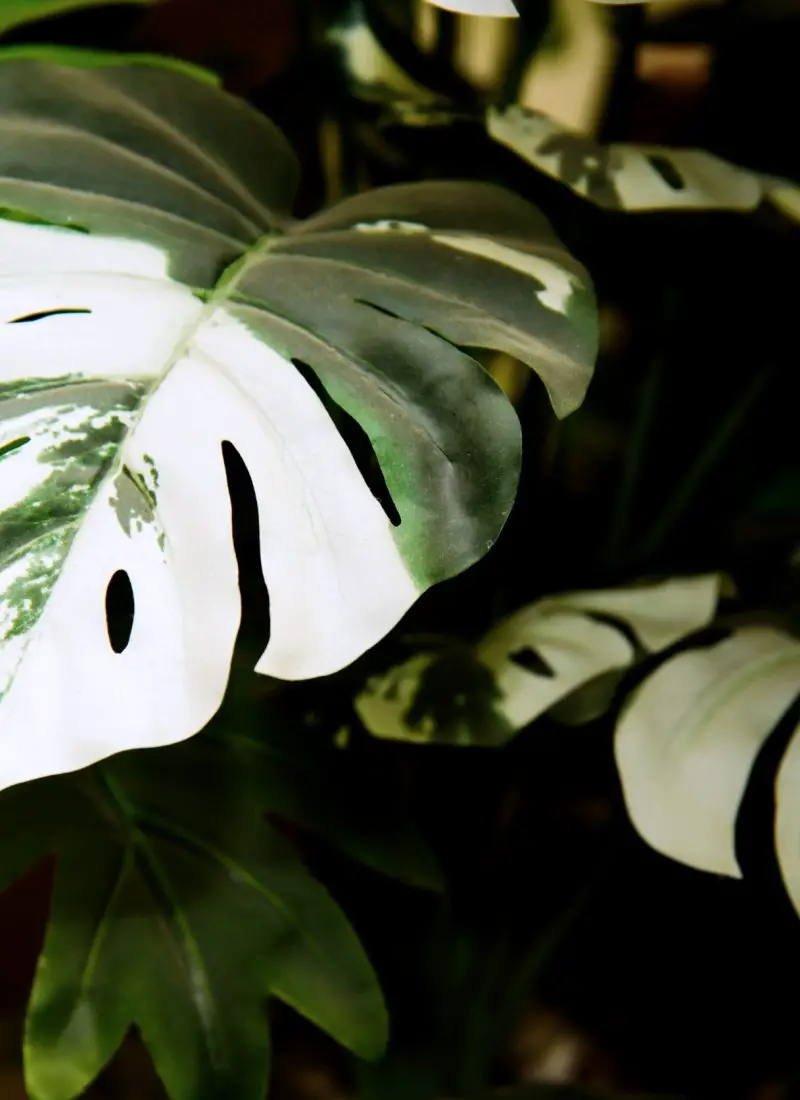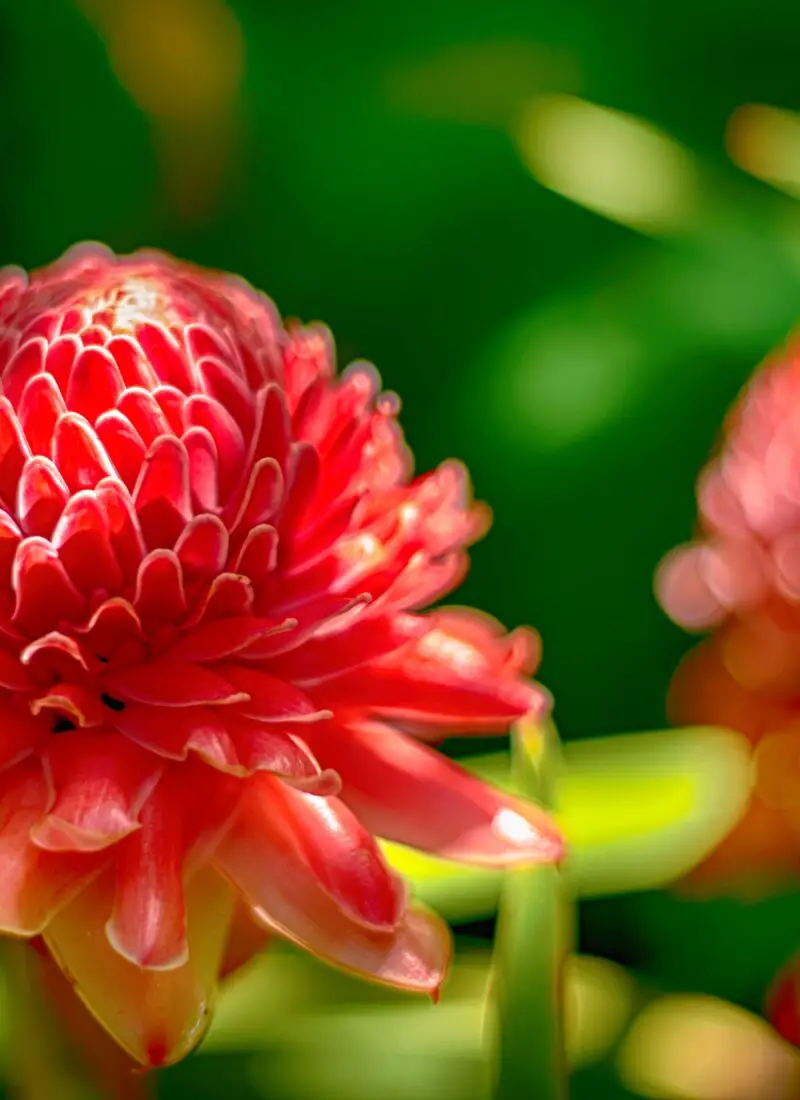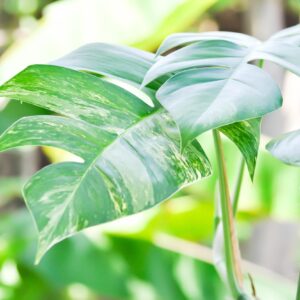
Have you ever seen an Elephant ear plant and wondered if it was a Colocasia or an Alocasia? It can be tough to tell them apart, but with this guide, you’ll be able to do it easily! If you’d like to read about another commonly mistaken similar-looking plants, have a look at our ‘Alocasia vs. Giant Philodendron’ article!
But for these Elephant ear plants, here’s what you need to know:
(As an Amazon Associate, I earn from qualifying purchases.)
Table of contents
- 1. Colocasia’s leaves droop down, while Alocasia’s are upright or horizontal.
- 2. Colocasias have larger elephant ear-shaped leaves than Alocasias.
- 3. Colocasia’s flowers are green/yellow, while Alocasia’s are white/cream.
- 4. Colocasia thrives in wetland conditions, while Alocasia prefers a moist soil environment.
- 5. Colocasia can grow in full direct sun, but Alocasia cannot.
- 6. Colocasia’s tuber is an edible crop, while Alocasia isn’t.
- Frequently Asked Questions About Colocasia and Alocasia
- Final Words
1. Colocasia’s leaves droop down, while Alocasia’s are upright or horizontal.
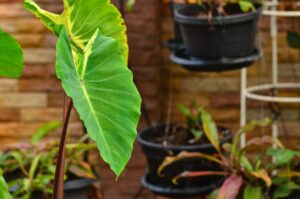
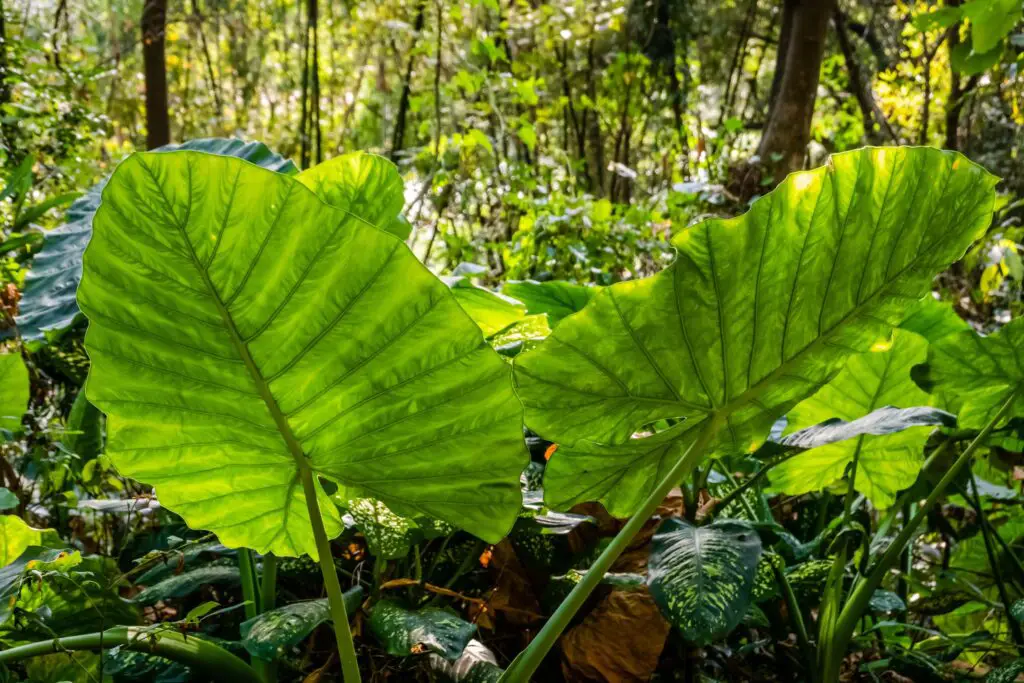
This is the fastest and easiest way to identify the two plants apart. For some varieties, these may not be noticeable if they’re still young. But the trick is to look closely at the petioles, i.e., leaf stalks, underneath the leaves.
The petioles of a Colocasia are attached near the rounded ‘V’ end of the leaf. It causes the heavy leaves to droop with their tips pointing to the ground. But for an Alocasia, the petiole extends along the leaf’s midrib, i.e., the middle, causing it to point upwards and stand upright or horizontally.
Fun fact: Both Colocasia and Alocasia don’t have stems. What you see jutting out of the ground or pot are thick leaf stalks that grow straight from the corm, i.e., a tuberous root.
2. Colocasias have larger elephant ear-shaped leaves than Alocasias.
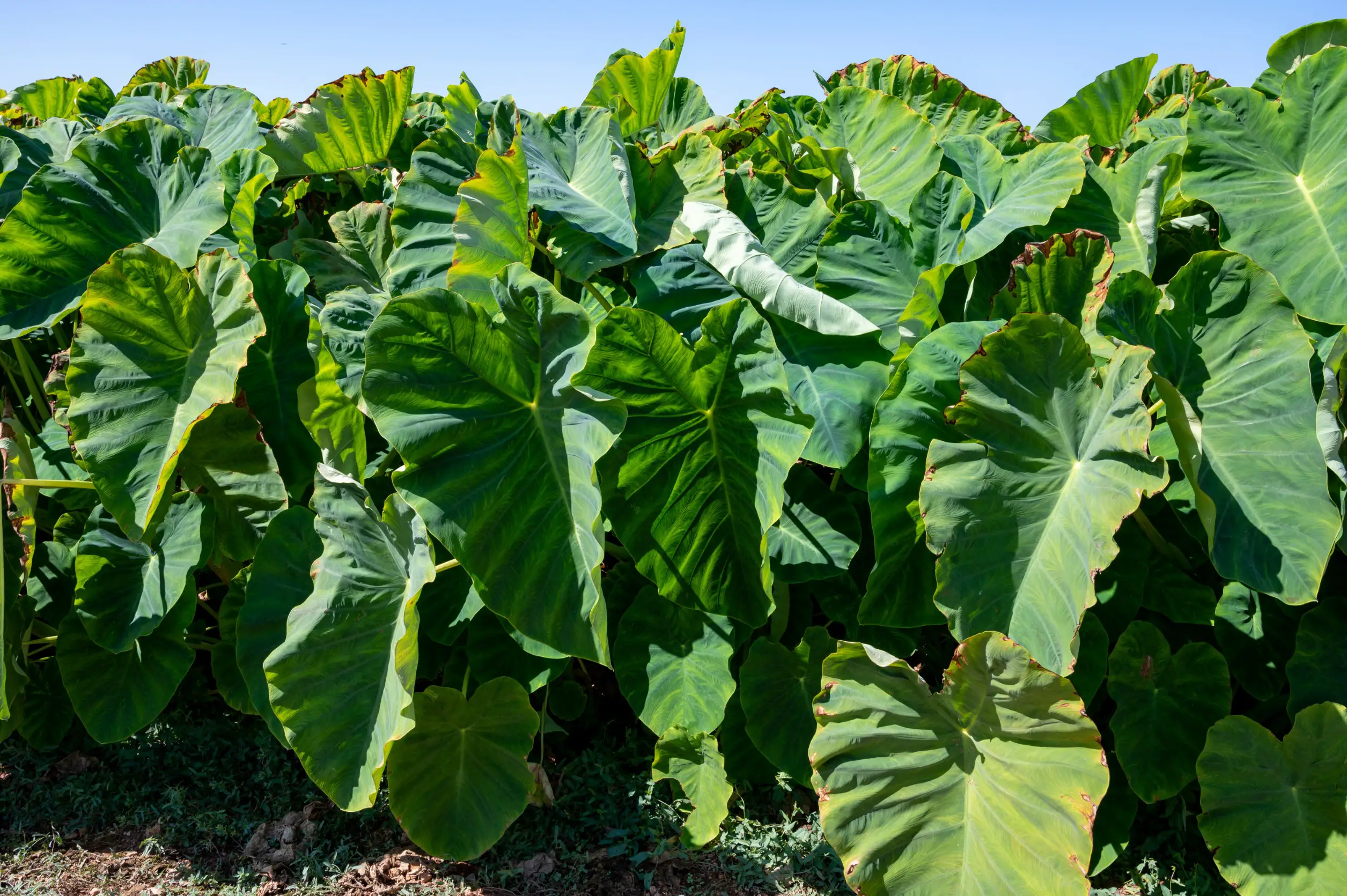
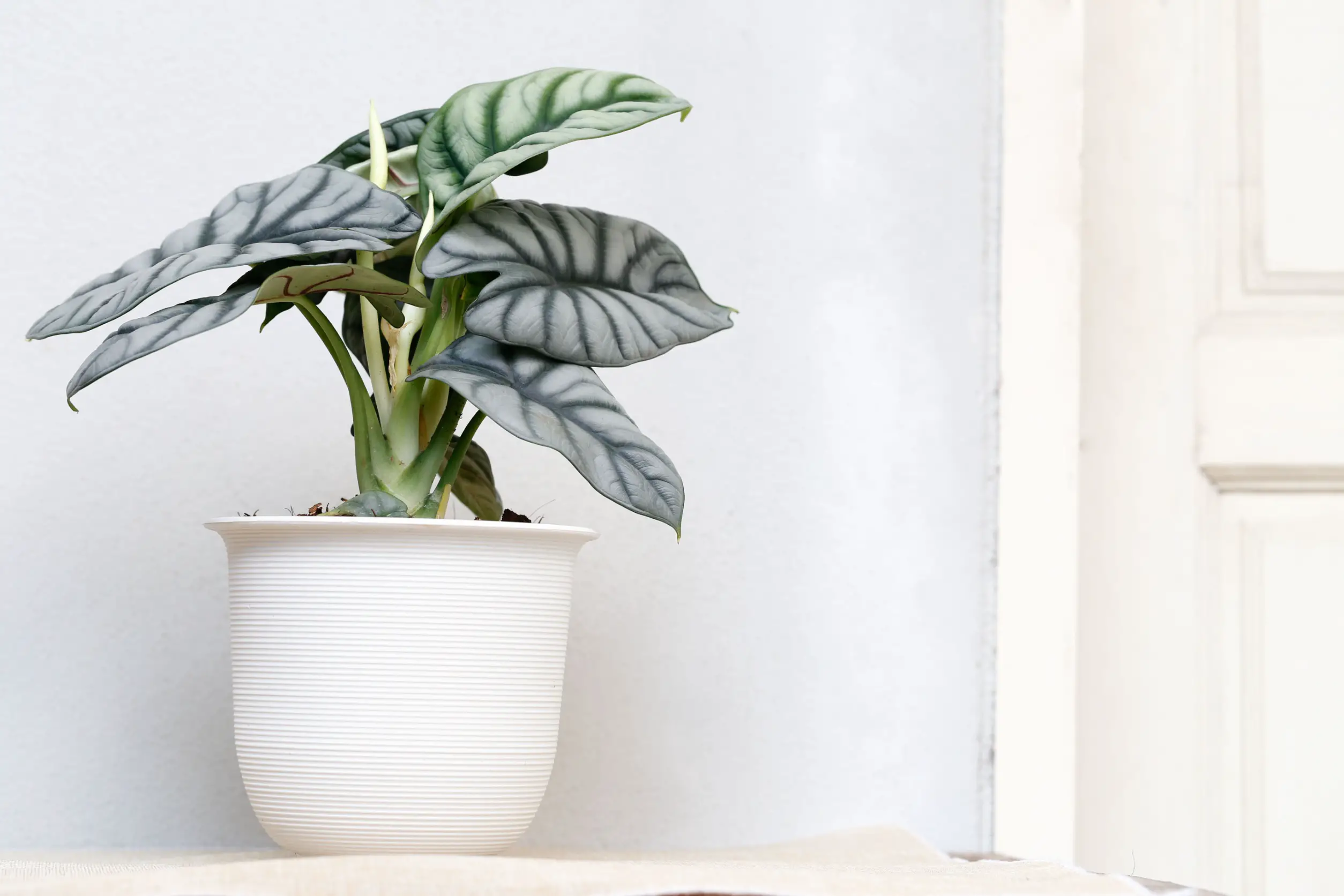
On a side-by-side comparison, Colocasia usually has bigger leaves, growing as large as 5 feet! But Alocasia has a smaller leaf size range, about 8 inches to 3 feet. As a houseplant, they rarely reach their full height.
Fun fact: The largest known Colocasia is the ‘Thailand Giant’. Its leaves can be 2 to 4 feet, with petioles as large as 6 inches!
3. Colocasia’s flowers are green/yellow, while Alocasia’s are white/cream.

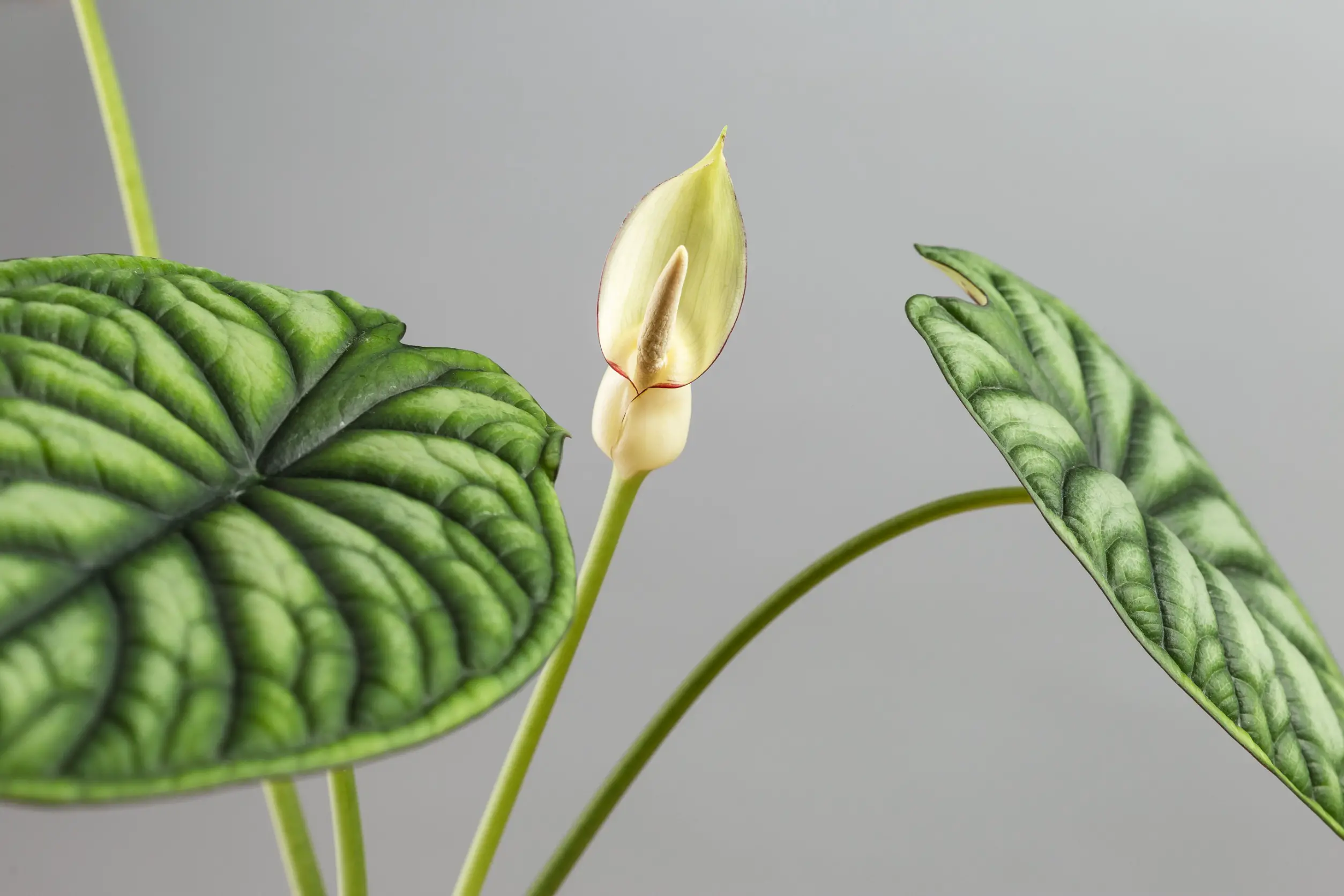
As indoor plants, both Colocasia and Alocasia are very unlikely to flower. But as outdoor plants, you may get to see them bloom. When that happens, you can quickly identify which is which.
A Colocasia will have a greenish-yellow spathe, i.e., a modified leaf surrounding a bumpy stalk called the spadix. On the other hand, Alocasia will have a creamy-white spathe instead. Contrary to popular belief, the spadix is the true flower of the plant, where tiny blooms will sprout before turning into berries.
Fun fact: Alocasia can ‘heat’ its flowering spadix to give it a more potent scent. This helps attract bugs, which will spread the plant’s fertilized pollen.
4. Colocasia thrives in wetland conditions, while Alocasia prefers a moist soil environment.
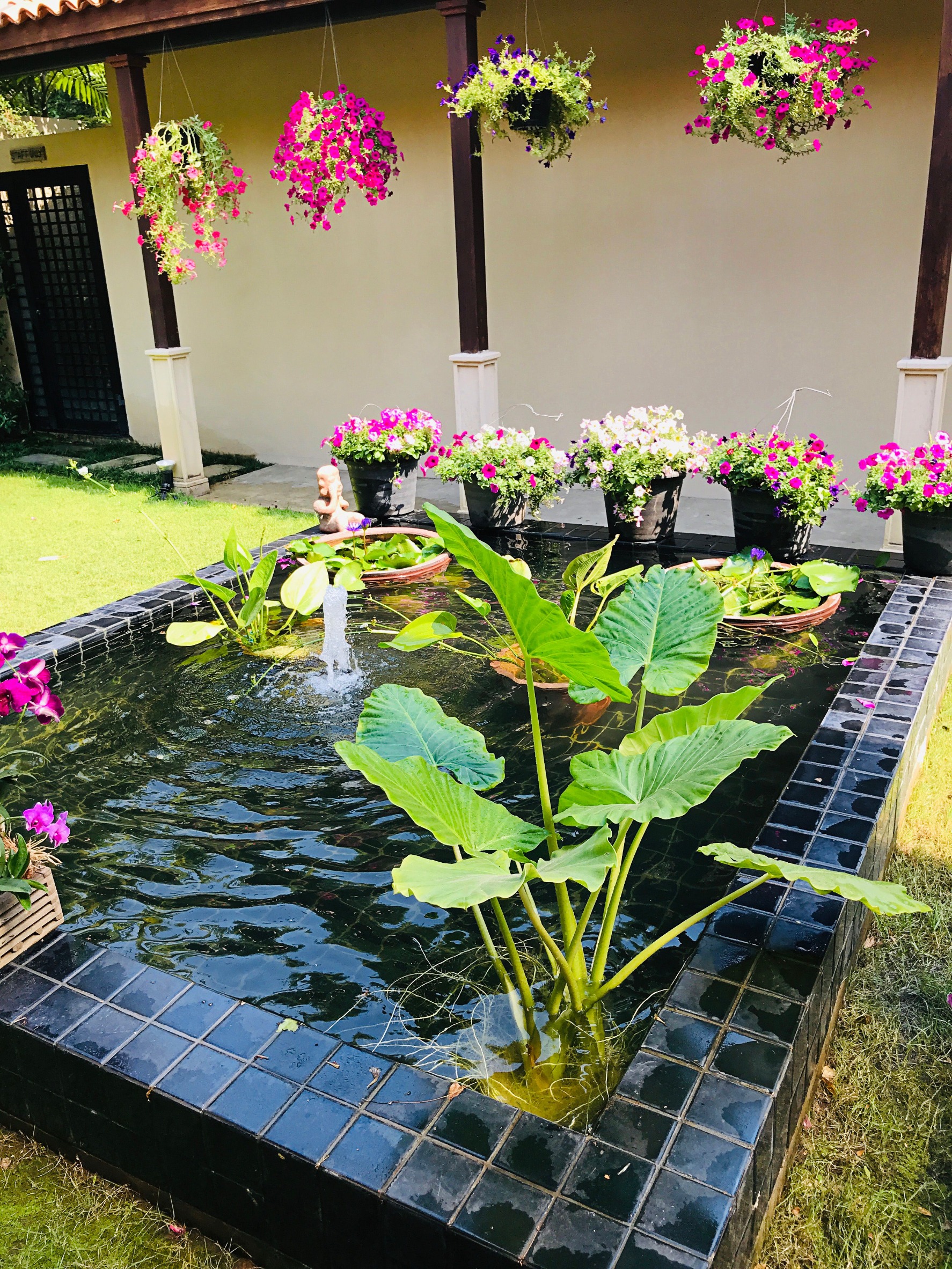
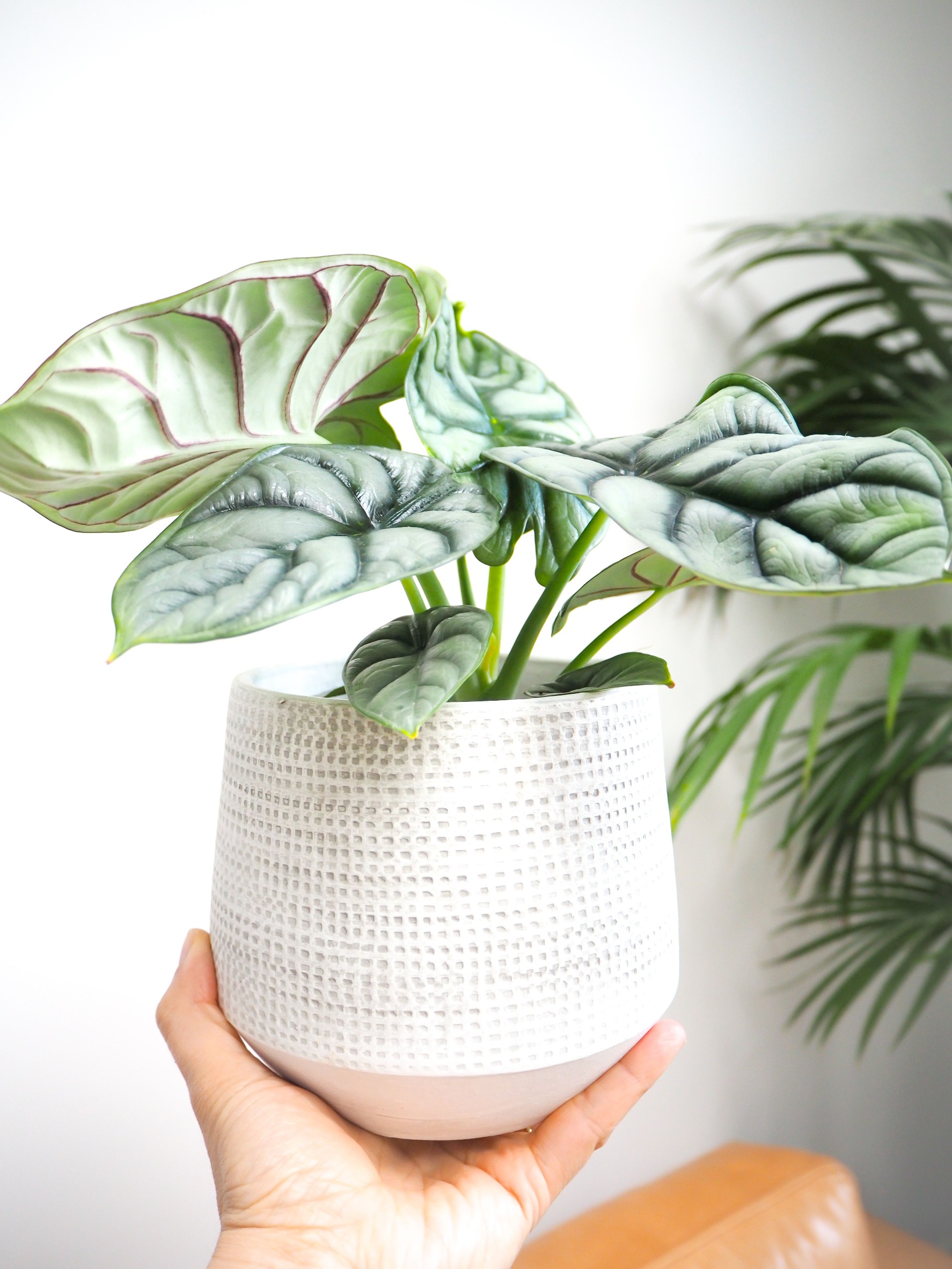
It’s almost impossible to overwater a Colocasia because they can thrive in soggy soil conditions, making them the perfect pondside ornamentals. But Alocasias prefer growing in consistently damp ground or potting media. If it is too wet all the time, the corms will rot. Either way, both plants must be kept from drying out.
Fun fact: Both plants, especially Colocasia, are considered invasive in some parts of the US, like Florida. To be on the safe side, restrict them in a container to prevent an overspreading of the plants.
5. Colocasia can grow in full direct sun, but Alocasia cannot.
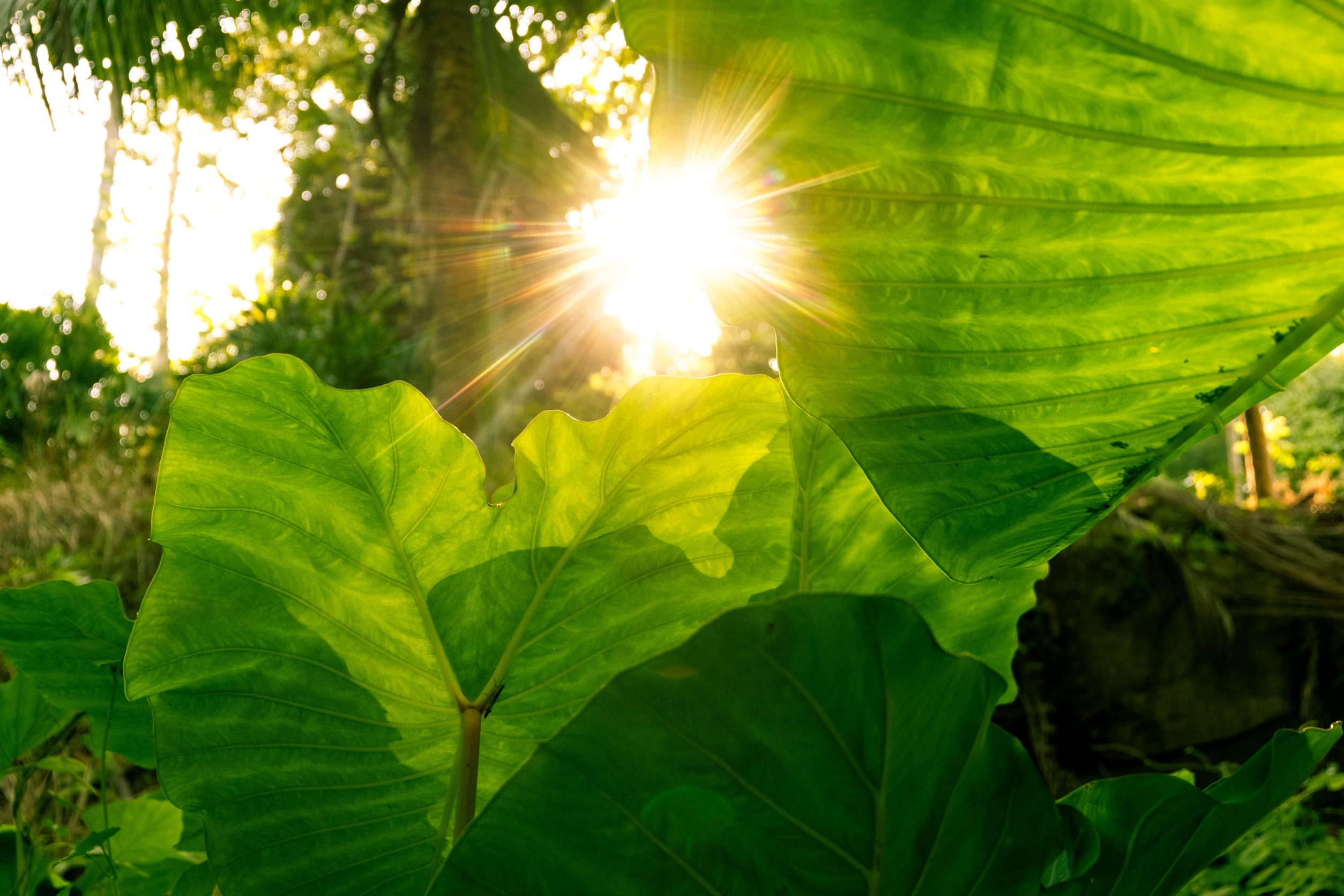
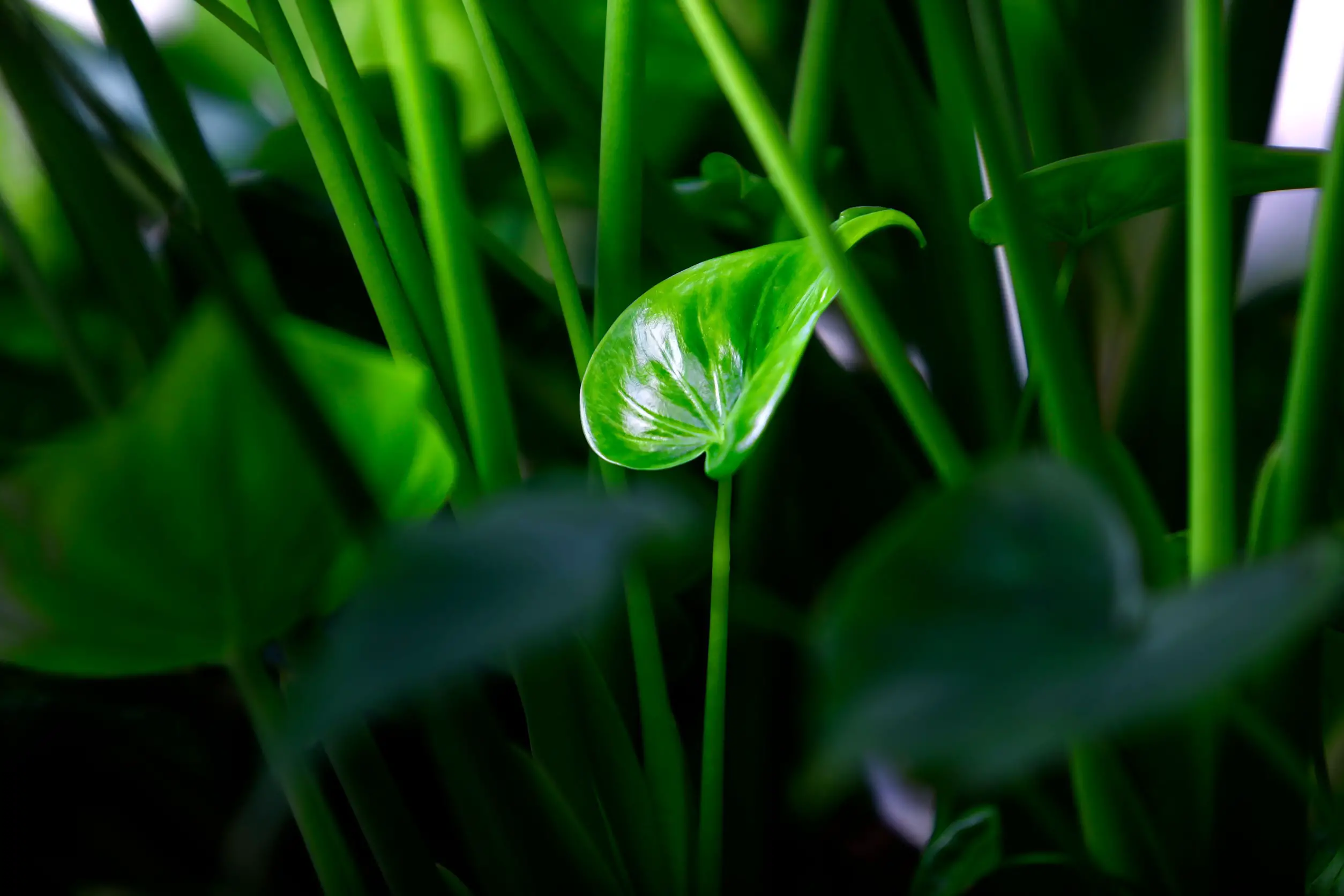
Colocasia does best with morning sunlight but requires shade in the afternoon to protect it from the intense rays. However, Alocasias are more sensitive and prone to scorching, so they only need indirect sunlight. They can also develop in shady areas, but their growth will be slower.
6. Colocasia’s tuber is an edible crop, while Alocasia isn’t.

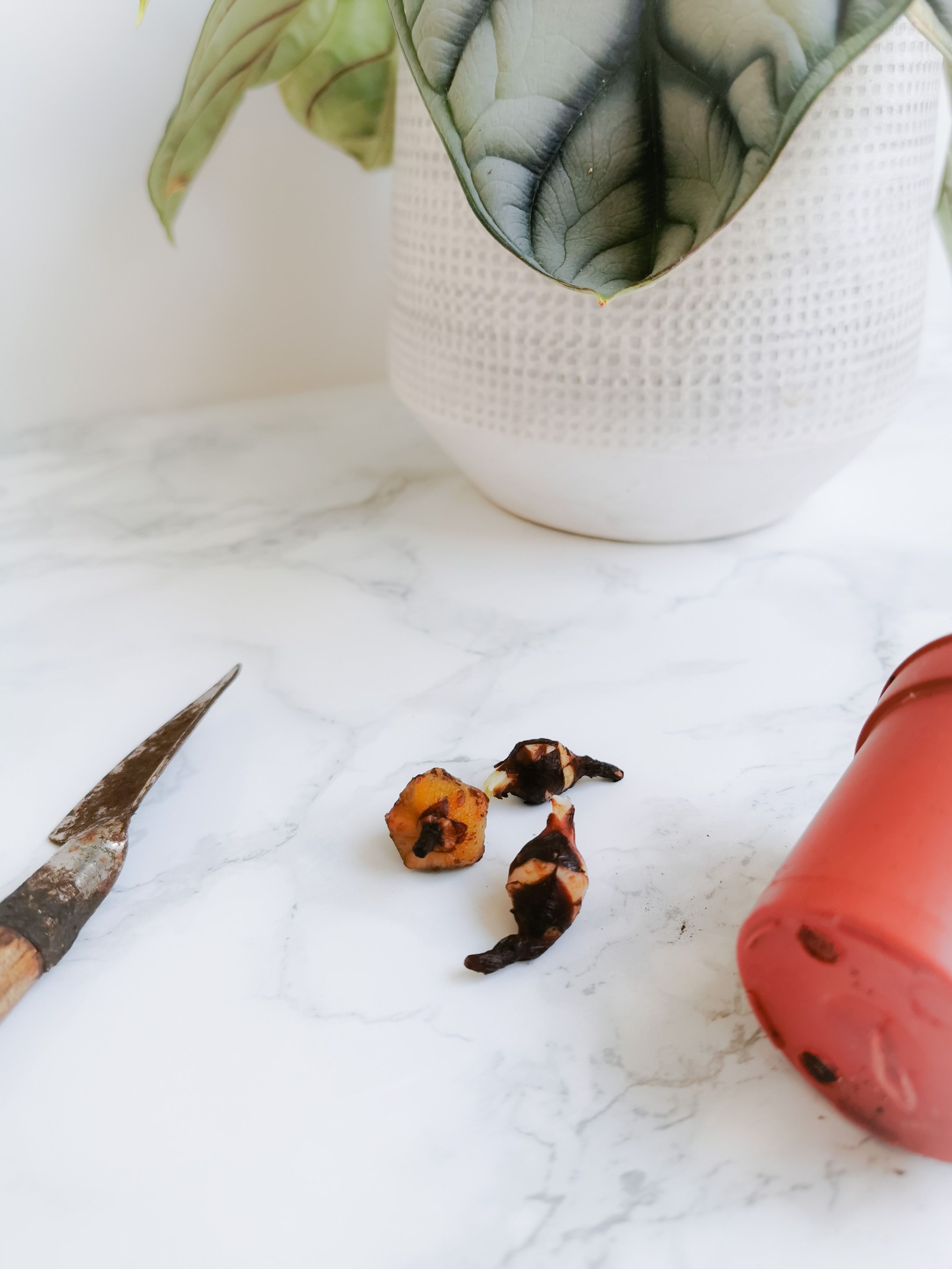
Both plants develop from tuberous roots called corms, but only Colocasia is commonly eaten in Southeast Asia. This specific edible variety is called ‘Colocasia Esculente’ but is popularly known as ‘Taro’ or ‘Cocoyam’. In some places, they have been considered a staple in people’s diets for generations. However, it’s only safe to eat after it is cooked thoroughly.
Some Alocasia varieties are said to be edible. However, compared to Colocasia, it is said to be unsafe to eat even after cooking. This is because traces of the toxic properties still linger despite its prolonged treatment with heat.
Fun fact: All parts of a Colocasia and Alocasia are toxic to eat when it’s still raw. For the latter, it may even cause dermatitis upon skin contact.
Frequently Asked Questions About Colocasia and Alocasia
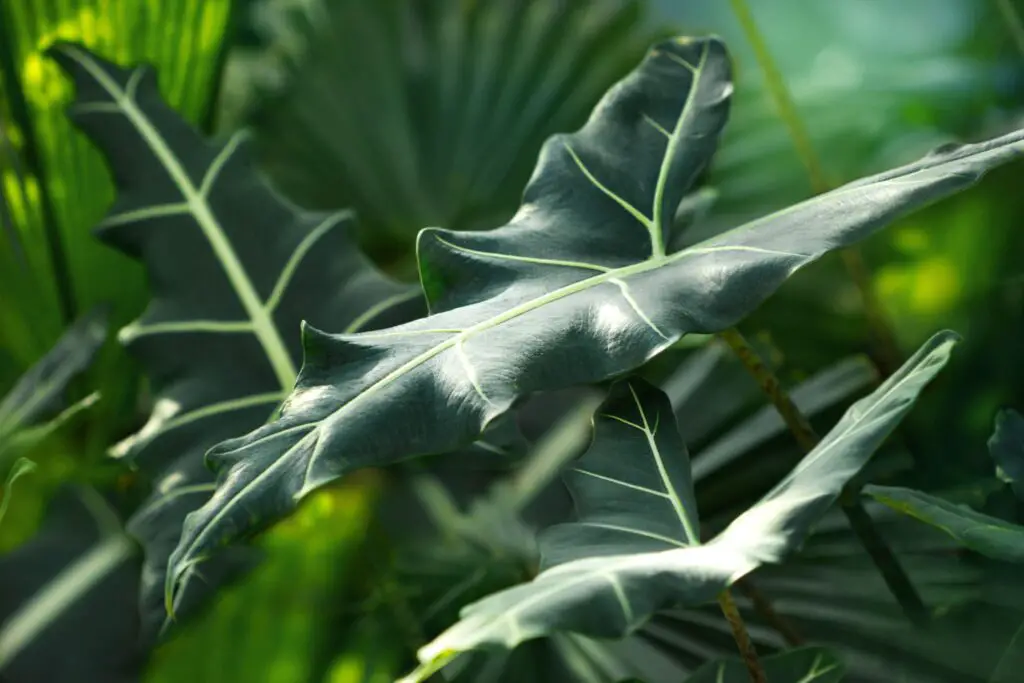
Elephant ear plants commonly belong to the Alocasia, Colocasia, and Xanthosoma sub-family. They are very closely related but have subtle differences you can use to tell them apart. But they all belong to one common group called the Arum/Araceae family.
Not all Elephant ear plants are Alocasia as they may also be Colocasia or Xanthosoma. These three sub-family groups all have some variations of the Elephant ear plant. But they all look a little different and have species-specific requirements for care.
An Elephant ear ‘Black Magic’ plant is a Colocasia variety with purple-black leaves. It is a unique black cultivar that requires full sun to grow well. If it is planted in a shady area, it won’t be able to develop to its full height.
A Colocasia can grow in wet soil conditions. Most of its varieties thrive in bogs or wetland areas where they multiply aggressively, choking out native plants. This is why the plant is considered invasive in some parts of the US and it is advised to keep them in a container and not in the ground.
Colocasia can grow in partial shade, but it will grow slowly as a result. It does best when given full direct or indirect sun. Generally, this plant is easy to grow in any condition. As long as it is protected from strong wind and frost, it’ll develop just fine.
Alocasia can be planted outdoors, provided it isn’t classified as a non-invasive species within the local area. It does best when the region is typically warm and humid. But if you live somewhere cold, it’s best to keep it indoors as a houseplant.
Alocasias need indirect sunlight to develop well. Too much direct sun will cause the leaves to suffer burn damage. So make sure to place it somewhere shady with a bit of sunlight poking through for the plant to grow.
All parts of an Alocasia are toxic upon ingestion and skin contact. It can cause dermatitis and is considered inedible due to its high toxicity. Even after cooking it thoroughly, it’s been said to retain traces of dangerous compounds.
Use gloves when handling an Elephant ear plant. Regardless of which sub-family it belongs to, this is good practice to prevent skin irritation, especially for sensitive people. When in doubt, do not handle an Elephant ear plant with bare hands.
Cut off a flowering Alocasia to divert its energy into growing new leaves. As a houseplant, it is unlikely to bloom at all. And even if it does, it is insignificant and often hidden among its foliage.
Final Words
Overall, Colocasia and Alocasia may look the same, but they have differences in both traits and care. It may take a while to tell them apart with ease. Though, with enough practice, you’ll can do just about anything. We believe in you! Happy planting 😀
References:
- Alocasia (Elephant’s-Ear, Giant Taro) | North Carolina Extension Gardener Plant Toolbox. (n.d.). Plants.ces.ncsu.edu. https://plants.ces.ncsu.edu/plants/alocasia/
- Alocasia (group) – Plant Finder. (n.d.). Www.missouribotanicalgarden.org. Retrieved October 26, 2022, from https://www.missouribotanicalgarden.org/PlantFinder/PlantFinderDetails.aspx?taxonid=264582&isprofile=0&
- Colocasia (Dasheen, Elephant’s-ear, Taro) | North Carolina Extension Gardener Plant Toolbox. (n.d.). Plants.ces.ncsu.edu. Retrieved October 26, 2022, from https://plants.ces.ncsu.edu/plants/colocasia/
- Colocasia esculenta (Caladium, Dasheen, Elephant Ears, Green Taro, Malanga, Taro) | North Carolina Extension Gardener Plant Toolbox. (n.d.). Plants.ces.ncsu.edu. https://plants.ces.ncsu.edu/plants/colocasia-esculenta/
- Colocasia esculenta – Plant Finder. (n.d.). Www.missouribotanicalgarden.org. Retrieved October 26, 2022, from https://www.missouribotanicalgarden.org/PlantFinder/PlantFinderDetails.aspx?taxonid=276338&isprofile=0&
- | Center for Aquatic and Invasive Plants | University of Florida, IFAS. (n.d.). Plants.ifas.ufl.edu. https://plants.ifas.ufl.edu/plant-directory/colocasia-esculenta/
- Elephant Ears (Colocasia, Alocasia, and Xanthosoma). (n.d.). Wisconsin Horticulture. https://hort.extension.wisc.edu/articles/elephant-ears-colocasia-alocasia-and-xanthosoma/
- FPS 33/FP033: Alocasia spp. Elephant’s Ear. (n.d.). Edis.ifas.ufl.edu. https://edis.ifas.ufl.edu/publication/FP033
- National Parks Board – Colocasia esculenta. (n.d.). Www.nparks.gov.sg. https://www.nparks.gov.sg/florafaunaweb/flora/1/8/1835
- Wild Taro – University of Florida, Institute of Food and Agricultural Sciences. (n.d.). Gardeningsolutions.ifas.ufl.edu. https://gardeningsolutions.ifas.ufl.edu/care/weeds-and-invasive-plants/wild-taro.html


